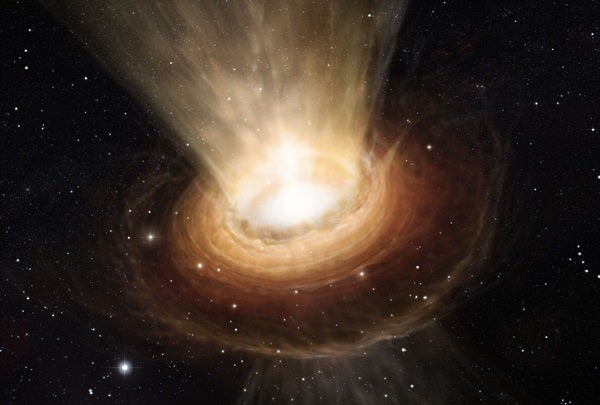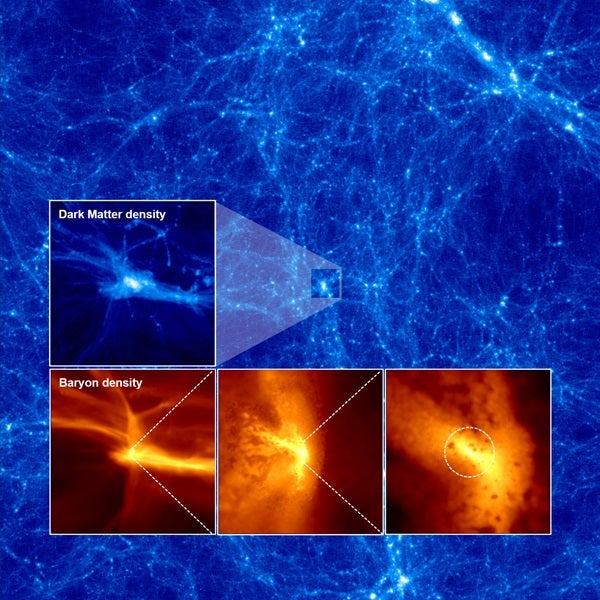Astronomers have found evidence of many supermassive black holes in the most distant reaches of space, corresponding to when our universe was very young — just 5 percent of its present age. While it’s possible for an average-sized black hole to grow to supermassive proportions, it generally takes a long time — more time than was available by that point.
These observations thus pose a conundrum: How could these supermassive black holes have formed so quickly in the early universe?
A collaboration of Japanese and German researchers believes they have solved the puzzle. Using computer simulations, the researchers recreated conditions found in the early universe to see if they could create a supermassive black hole. Unlike previous models, their simulations factored in supersonic gas streams left over after the Big Bang. That change allowed supermassive black holes to form in a short period of time, in numbers that closely match the population of supermassive black holes we see.
“This is significant progress. The origin of the monstrous black holes has been a long-standing mystery and now we have a solution to it,” said author Naoki Yoshida of the Kavli Institute for the Physics and Mathematics of the Universe in a statement.
In the simulations, the researchers looked in dark matter halos — the clumps of dark matter where galaxies form. As they watched, the motion of the gas streams and their interaction with the dark matter initially stifled formation of early stars. By the time the gas finally collapsed into a star, the dark matter halo had coalesced so much mass that the star was able to grow to elephantine proportions, eventually reaching 34,000 times the mass of the Sun. Then, unable to support its own weight, the star collapsed, forming a supermassive black hole.
The results build on previous supermassive black hole formation theories, some of which need specific initial conditions that aren’t often observed in the early universe. One theory suggests that multiple black holes could merge to form a supermassive black hole, but this would require a high density of dark matter halos, and probably couldn’t alone create the numbers of supermassive black holes already observed in the early universe.
Another theory proposes that bright ultraviolet light from star formation in young galaxies could prevent a nearby gas cloud from forming stars until it has enough mass to collapse directly into a black hole. This however requires a large gas cloud right next to a star-forming galaxy, a scenario that also isn’t terribly common.
It may be that in the cosmic kitchen, there is no perfect supermassive black hole recipe, rather a smorgasbord of options. Observational astronomers are hoping several upcoming space telescope missions will provide additional clues to the origin of these behemoths. NASA’s James Webb Space Telescope, set to launch in 2019, will look into the early universe to better assess the conditions in which supermassive black holes are found. ESA’s ATHENA mission, still a decade out, will eventually observe the X-ray emissions from these giants.
Astronomers hope that understanding the environments these supermassive black holes inhabit will help them distinguish between competing formation methods and better understand how gargantuan black holes form, grow, and affect the galaxies in which they live.











